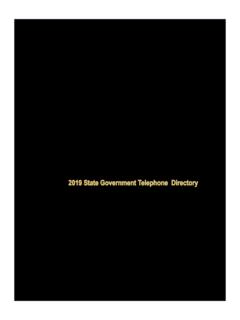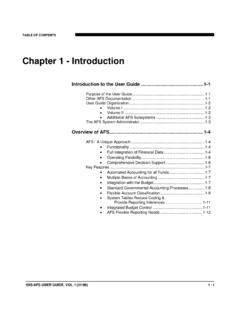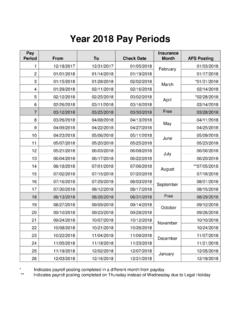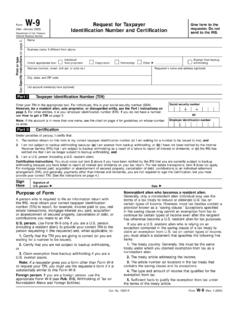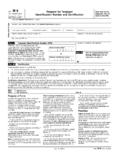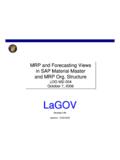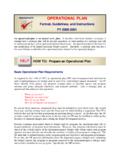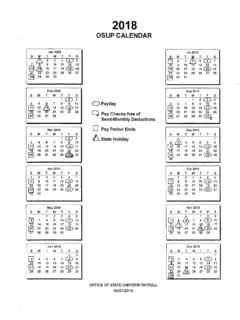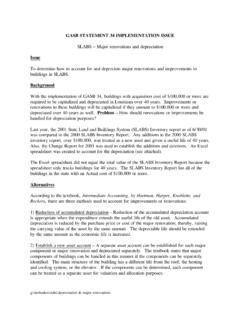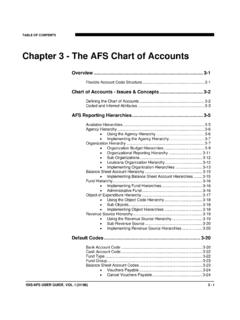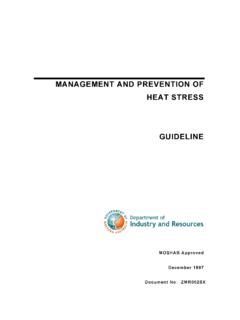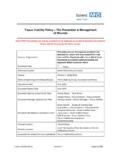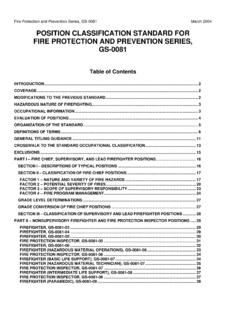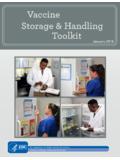Transcription of EQUIPMENT MANAGEMENT PREVENTATIVE …
1 EQUIPMENT MANAGEMENT . PREVENTATIVE maintenance PROGRAM. LOSS prevention UNIT. OFFICE OF RISK MANAGEMENT . DIVISION OF ADMINISTRATION. OFFICE OF THE GOVERNOR. Revised January 1, 2000. Revised January 1, 2000 EQUIPMENT MANAGEMENT Page 1. CONTENTS. EQUIPMENT MANAGEMENT . Page Introduction 3. Program Goal 3. Components of EQUIPMENT MANAGEMENT Loss Control and 3. maintenance Program Responsibility 5. For Additional Information 6. Documentation of EQUIPMENT 6. EQUIPMENT Included in the Program 8. Non Destructive Examination Methods 56. Disolved Gas Analysis 61. PREVENTATIVE maintenance Program 62. Roof Inspection Program 64. Revised January 1, 2000 EQUIPMENT MANAGEMENT Page 2. EQUIPMENT MANAGEMENT . LOSS CONTROL AND maintenance PROGRAM. Introduction: The Office of Risk MANAGEMENT has developed a comprehensive EQUIPMENT MANAGEMENT loss control and maintenance program to assist all State agencies in conducting effective maintenance operations within their facilities.
2 The program will assist agencies in lowering the high cost of insurance, reducing the number of unplanned outages and extending the life of the State's boiler and machinery EQUIPMENT and all other EQUIPMENT owned, leased, or maintained by the agency. Program Goal: The primary goal of an EQUIPMENT MANAGEMENT program is to ultimately decrease the amount of unscheduled EQUIPMENT maintenance by increasing the efficiency in managing the scheduled EQUIPMENT maintenance . The State of Louisiana is committed to a continuing, aggressive program for maintenance of boiler and machinery EQUIPMENT , and all other EQUIPMENT owned and maintained by the agency, at all levels of state government. An effective program will reduce losses of EQUIPMENT , decrease operational down time and extend the life of state boiler and machinery and other EQUIPMENT . In order to maintain EQUIPMENT in peak operating condition, the organizations production facilities demand more attention today than ever before.
3 The size, nature and complexity of the operation will dictate specific maintenance requirements. All systems have to be maintained in such a manner that temperature, humidity, plumbing, lighting, air quality, emergency, and safety EQUIPMENT are kept at an acceptable level as well as stringent building and safety codes. Components of an EQUIPMENT MANAGEMENT Loss Control and maintenance Program: 1. Agency maintenance Policies and Procedures: Revised January 1, 2000 EQUIPMENT MANAGEMENT Page 3. Each agency is responsible for implementing a viable EQUIPMENT MANAGEMENT maintenance program. This program shall include designating personnel who are responsible for specific maintenance areas. Policies must outline the roles and responsibilities of managers, supervisors and employees within the maintenance program. These policies should be made available and accessible to all maintenance personnel.
4 The Loss prevention Unit will provide guidance and direction to agencies in developing an effective EQUIPMENT MANAGEMENT loss control and maintenance program. 2. Communication/Organization: The Loss prevention Unit will work with agencies in setting up the program within the agency. The Unit will also assist agencies in identifying systems and objects to be incorporated into the program. The commercial insurance carrier will make observations of the maintenance program during their inspections at State facilities. These observations, along with recommendations for corrective action, will be reported in writing to the Office of Risk MANAGEMENT . All correspondence will then be forwarded to the agency for compliance with recom- mendations. Agencies who have commercial maintenance /service contracts in force will notify their State Loss prevention Officer during their periodic visit.
5 3. Audits and Record Keeping: The Loss prevention Unit will assist agencies in reviewing and analyzing their EQUIPMENT MANAGEMENT maintenance program to determine that it is properly designed to have the intended impact. Records will be maintained on all EQUIPMENT to include, but not necessarily limited to, preventive maintenance schedules, testing results, repair documents, replacement Revised January 1, 2000 EQUIPMENT MANAGEMENT Page 4. documents and all completed service documents. Annual audits will be conducted on the program. Responsibility: The Loss prevention Unit will assist agencies in organizing and implementing a maintenance program that minimizes the adverse impact of boiler/machinery and other EQUIPMENT failures. Department and Agency Heads are responsible for the implementation of an EQUIPMENT MANAGEMENT maintenance program for their particular type of EQUIPMENT .
6 This program will include as a minimum responsibility: EQUIPMENT Inventory What items have to be maintained? Where are they located? What has to be done to them? What trade skills are necessary to accomplish this work? How often should it be done? How long should it take? EQUIPMENT History What work was done on this EQUIPMENT in past? Who did it? How long did it take? What parts were used? How often has this problem occurred in the past? Is it cost effective to replace this EQUIPMENT ? Should this work be billed to a tenant? Staffing What manpower is required? What level of skill is required? Is the manpower being used effectively? Does anyone require training? Revised January 1, 2000 EQUIPMENT MANAGEMENT Page 5. Can the work be done in-house or contracted out? The Commercial Insurance Carrier will perform on site inspections to insure agencies are operating within the prescribed boiler/machinery code and law.
7 They will forward a copy of this report to the Office of Risk MANAGEMENT . A Commercial Elevator Inspector will conduct annual elevator inspections at all agencies. maintenance deficiencies, recommendation and code violations for the elevator contractor and the building owner/manager will be issued. A copy of the report will be sent to State Buildings and Grounds and to the Loss prevention Unit. The agency is responsible for the repair or replacement of all deficiencies and code violations immediately. For additional information: For additional information, call the Loss prevention Unit at (225) 342-8532. Documentation of EQUIPMENT : Individual maintenance schedule records for boiler and pressure vessels, motors and engines, gear sets, electrical EQUIPMENT and transformers are provided in this program. These schedules should be tracked on a computer based program or minimally retain the records on index cards or other written medium.
8 Agencies may use their own forms but must include, as a minimum, the information on the Addenda. All rotating machines need to be on a formal lubrication program with specific individuals assigned to the task of doing the lubricating. He should document how often he does it, what type of lubrication is needed, how much quantity is required in the EQUIPMENT itself, and keep an inventory record of the different lubricants he needs. Monitoring Systems: These should be included for a complete preventive maintenance program. 1. Vibration - This should be installed on all critical rotating machines. Revised January 1, 2000 EQUIPMENT MANAGEMENT Page 6. 2. Infrared - This should be used to find hot spots in electrical EQUIPMENT such as transformers, switch gears, and cables. 3. Megger testing (insulation resistance) - This should be used to detect grounds, damp windings, damaged insulation, current leakage to ground and other conditions that contribute to electrical breakdown.
9 4. Transformer oil testing - This should be used to detect dissolved gases in the transformer oil (annually). It is recommended that on special EQUIPMENT the agency follow suggested manufacturer's preventive maintenance . Revised January 1, 2000 EQUIPMENT MANAGEMENT Page 7. EQUIPMENT INCLUDED IN THE PROGRAM. OBJECT PAGE. Water Heaters .. 10. Boilers (small heating and supply types) .. 10. Boilers .. 11. Steam Heating .. 13. Hot Water Boilers .. 13. Coil-Type Water Tube Boilers .. 16. Pressure Vessels .. 17. Air Conditioning Units (window units/heat pumps) .. 18. Large Air Conditioning Units .. 19. Air Conditioning Systems (chilled water type) .. 21. Compressors .. 22. Motors .. 23. Condensers .. 23. Evaporators .. 24. Cooling Towers .. 25. Piping .. 26. Purge System .. 27. Absorption Machine .. 27. Electric Panels .. 28. Switchgear.
10 28. Motor Control EQUIPMENT .. 29. Oil Circuit Breakers .. 30. Air Circuit Breakers .. 31. Transformers .. 33. AC Generators .. 35. DC Generators (Rotary Converters) .. 39. Electric Motors .. 40. Storage Batteries .. 41. Relays .. 43. Lighting and Surge Protection EQUIPMENT .. 43. Rectifiers (Power Semi-conductor EQUIPMENT ) .. 44. Uninterruptable Power Supplies .. 44. Revised January 1, 2000 EQUIPMENT MANAGEMENT Page 8. OBJECT PAGE. Steam Turbines .. 45. Internal Combustion Engines .. 47. Reciprocating Compressor .. 49. Centrifugal Compressor.. 50. Pumps .. 51. Positive Displacement .. 51. Centrifugal and Axial .. 52. Fans and Blowers .. 52. Gear Sets .. 53. Shaft Mounted Couplings .. 54. Base Mounted Couplings and Clutches .. 54. Fly Wheels and Pulleys .. 54. Revised January 1, 2000 EQUIPMENT MANAGEMENT Page 9. Water heaters: A. Monthly 1.
